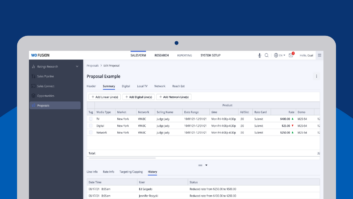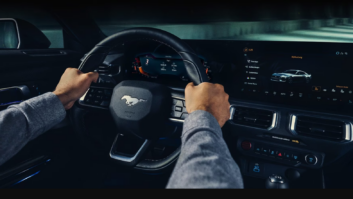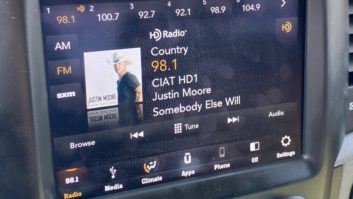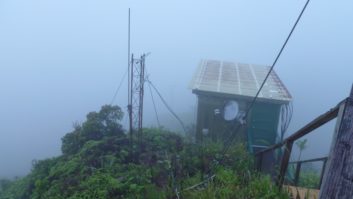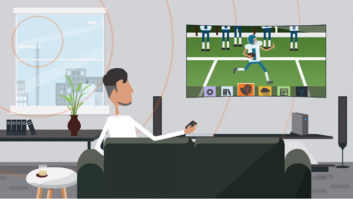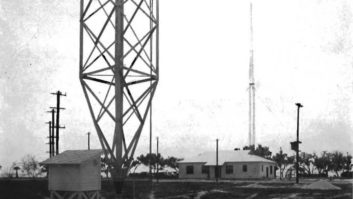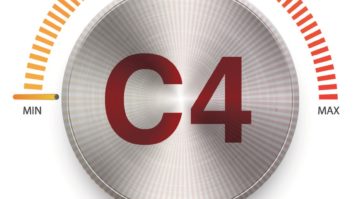Alternate Channels
Apr 1, 2007 12:00 PM, by Jeff Smith CEA, CBNT
Since radio first started broadcasting, the way we reached our listeners was over the air. We put audio into an RF transmitter and served the audience; it was that simple. Today, however, radio faces challenges from new technologies that are eroding the traditional radio audience. During the past year reports have been released by Arbitron, Edison Media Research and Bridge Ratings that show listenership and TSL among younger radio listeners is slipping at an alarming rate. One Edison Media Research study showed TSL among 18 to 24-year-olds has gone down by 24 percent since 1993. Yet, in the UK some of the latest RAJAR data shows that radio listenership is on the rise with more than 45 million listeners or 90 percent of the population. What is working for the British broadcasters that we are not doing here?
The simple answer may be that they have adopted a platform-neutral philosophy. They are using nontraditional delivery methods to deliver their product to the listener. Concepts like Internet radio, Wi-fi, podcasting and even cell phone listening are drawing listeners that otherwise would not be there.
Internet
Streaming audio over the Internet has been around for several years but in the past few years it has seen a huge gain in listenership. One of the driving forces behind this surge is the availability of high-speed Internet access. Speeds that enable high quality audio streams are now available with cable modems, DSL and even residential fiber-optic service. These speeds allow Internet streams to deliver quality audio and other features our audience wants. Today radio stations can deliver artist and title information, the ability to purchase the song, unique advertising and graphics via the Internet. The other benefit the Internet affords broadcasters is the ability to add additional channels without the cost associated with HD Radio multicasting. It is easier than ever for broadcasters to add channels that narrowcast, meaning they offer variants of the main program or something totally different.
Podcasting
Internet radios, such as these from Solutions Radio and Roku, are making their way into common use.


The Internet also allows broadcasters to offer something new for radio: podcasts. Podcasts allow broadcasters to deliver a product that a listener can take with them on their portable media player. The technology for this is relatively new but has great potential. A broadcaster can post updates as often as wanted to these digital media files. Then, using a format know as RSS or another know as ATOM, let the world know that the file has been updated. RSS and ATOM are formats known as “feeds” that provide information such as publish date, titles and accompanying text descriptions of the audio. A consumer uses a type of software known as an aggregator to subscribe to and manage their feeds. Aggregator features are even built into websites like Google and Yahoo.
A podcast-specific aggregator is usually always on. It starts when the computer is started and runs in the background. It manages a set of feed Uniform Resource Identifier (URIs) added by the user and downloads each at a specified interval, such as every two hours. If the feed data has substantively changed from when it was previously checked the program determines the location of the most recent item and automatically downloads it to the user’s computer. It is estimated that 20 percent of podcasts are actually consumed on portable media players while 80 percent are consumed on the PC onto which they are downloaded, or deleted from the PC without being listened to. Many applications also automatically transfer the newly downloaded episodes available to a user’s portable media player. The downloaded files can then be played, replayed or archived as with any other computer file or stored to a portable media player.
Wi-fi
Another exciting alternative for radio, along the lines of high-speed wired Internet access, is Wi-fi (IEEE 802.11x) hot spots. These hot spots, which enable wireless high speed Internet connectivity, are often found at restaurants, train stations, airports, libraries, coffee shops, bookstores, gas stations, department stores, supermarkets and other public places. Many universities and schools also have wireless networks on their campus’, not to mention individuals who are using Wi-fi at home. With these hot spots becoming so readily available it is yet another way for broadcasters to deliver compelling programming wirelessly. Wi-fi radios are becoming more readily available today. They are manufactured as tabletop and portable devices that look like traditional radios, but instead of just offering AM and FM they also receive Internet radio. Users can also listen to Internet streams and download podcasts using their Wi-fi-enabled laptops and PDAs.
Mobile phones

The marriage of personal electronics continues as cell phones, such as the Motorola E398, add media player functions.
Another delivery method for audio that is not traditional but many people believe will outpace any other technology today is streaming audio over 3G-enabled mobile phones. Many companies today, including Orban, are making codecs that allow broadcasters to send a high quality audio stream to devices like cell phones. National providers such as Sprint Nextel, Verizon and AT&T are selling devices that allow customers to listen to audio streams on their phones. This is a great opportunity for broadcasters to deliver programming in yet another place. Subscribers to a station’s mobile content will be able to interact directly from their phones to listen to streamed and on-demand content including podcasts of news, weather, traffic, celebrity interviews and popular show segments. They can also find the title and artist of songs played on-air, make a song request directly to the station and receive a text message before the song is played, get free station wallpapers for their phone, and even submit content like pictures and audio to the station.
HD Radio data channels
One other alternate channel for traditional radio is the data portion of HD Radio. This is different than the current HD-2 and HD-3 additional channels. Using the data streams available to HD Radio may allow broadcasters to deliver things like conditional access products. This would work similar to pay-per-view on TV. Listeners could choose to subscribe to services offered by radio on the data channels. These could include news, addition programming or anything else imaginable. Conditional access technologies will be making an appearance at NAB2007.
The possibilities are endless for broadcasters who have the vision to use some or all of the additional channels becoming available today. With the worlds of radio and Internet becoming more blurred it is almost an inevitability that broadcasters will need to adopt some of these new technologies or get left behind. A platform-neutral type of attitude may serve broadcasters better in the long run.
As radio continues to faces challenges from other entertainment sources it must adapt. People today like to listen to their Ipods, carry their cell phones and spend a lot of the day on a computer with high speed Internet access. If radio can deliver its product to more than just the traditional radio receiver it will serve the public and advertisers better than ever; if not the future may not be so bright. As broadcasters in other parts of the world have proven, listeners are out there and have a desire for quality programming, we just need to put our product where the listener is.
Smith is president, JRS Broadcast Engineering, Monroe Township, NJ.





